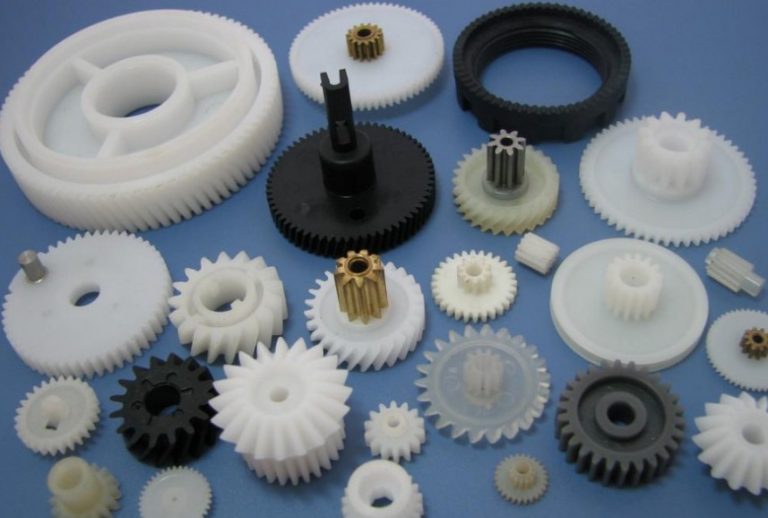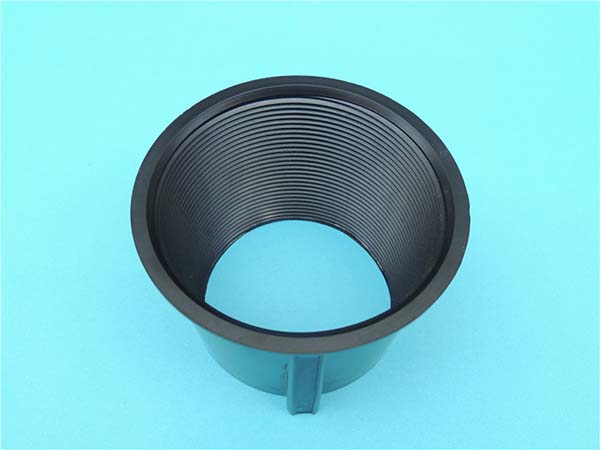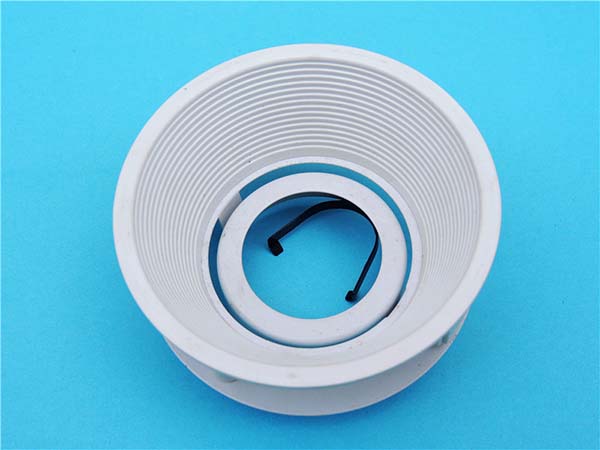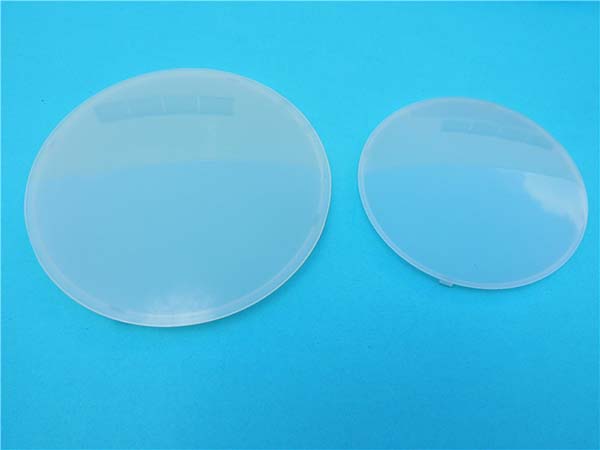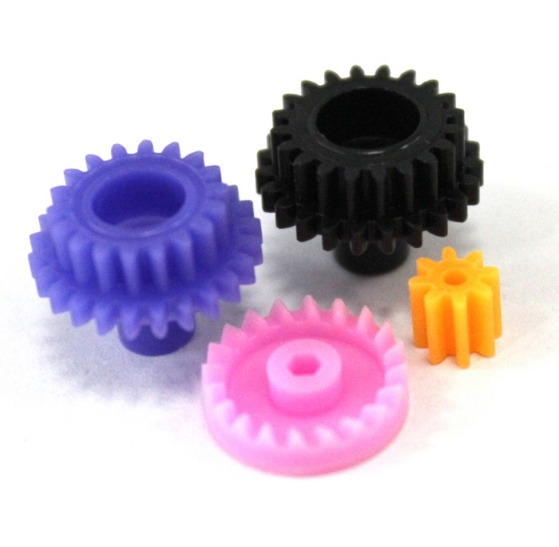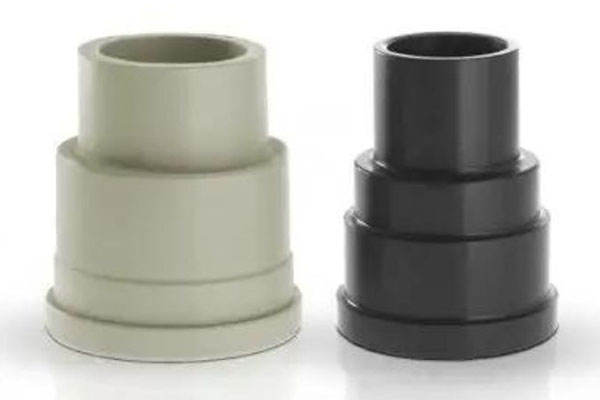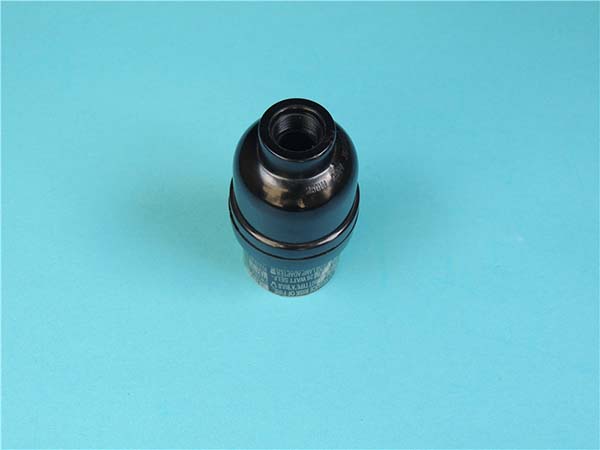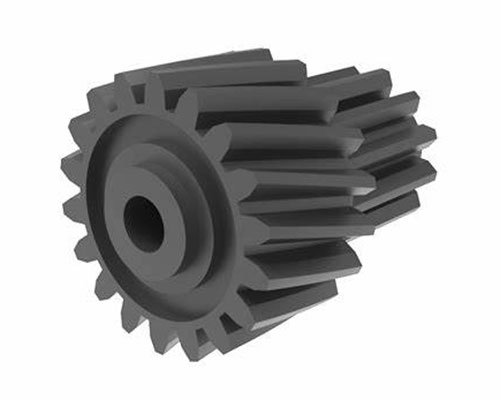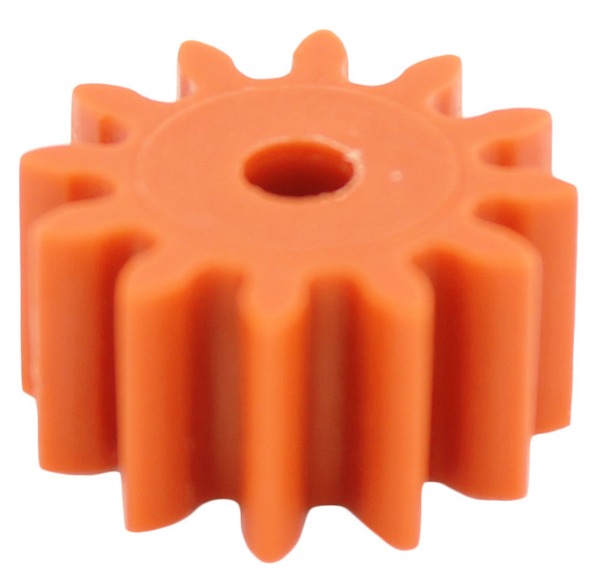Introduction
The Rising Star in the Gear World
In the vast realm of mechanical components, gears are the unsung heroes that power countless devices, from the tiniest wristwatches to colossal industrial machinery. Among the diverse types of gears available, plastic gear sets have emerged as a revolutionary option, capturing the attention of engineers, designers, and manufacturers across various industries. These unassuming components are quietly transforming the way we approach precision engineering, offering a unique blend of properties that make them a viable alternative to traditional metal gears.
Plastic gear sets are no longer relegated to the realm of low - performance applications. Thanks to advancements in materials science and manufacturing techniques, they are now being employed in a wide range of industries, including automotive, aerospace, electronics, and medical devices. Their ability to operate with high precision, reduce noise and vibration, and offer cost - effective solutions has made them a go - to choice for many engineers looking to optimize their designs.
I. Understanding Plastic Gear Sets
1.1 What Are Plastic Gear Sets?
Plastic gear sets are mechanical components made primarily from various types of plastics. These plastics, such as nylon and polyoxymethylene (POM), are carefully selected for their unique mechanical properties. Nylon, for instance, is known for its high strength - to - weight ratio, good impact resistance, and self - lubricating properties. It contains amide groups in its molecular structure, which contribute to its excellent mechanical performance. POM, on the other hand, is often referred to as "acetal" or "polyacetal". It has a high degree of crystallinity, giving it exceptional stiffness, low friction coefficient, and outstanding dimensional stability.
A plastic gear set typically consists of multiple gears that work in tandem. Each gear has teeth that are precisely designed and shaped to mesh with the teeth of other gears in the set. When one gear, known as the driving gear, rotates, it transfers its rotational motion and torque to the adjacent gears, the driven gears. This transfer of motion is what enables the plastic gear set to perform its intended function, whether it's reducing speed, increasing torque, or simply changing the direction of rotation in a mechanical system.
1.2 Key Components and Their Functions
Driving Gear: Also called the (active gear) or input gear, the driving gear is the one that receives the initial power input, usually from a motor or some other power source. For example, in a small - scale electric motor - driven mechanism, the shaft of the motor is directly connected to the driving gear. As the motor rotates, it imparts a rotational force to the driving gear. The number of teeth on the driving gear, in combination with the number of teeth on the driven gears, determines the gear ratio of the system. A smaller - toothed driving gear meshing with a larger - toothed driven gear will result in a reduction in rotational speed but an increase in torque.
Driven Gear: The (driven gear), or output gear, is the one that receives the motion and torque from the driving gear. Its rotation is a direct result of the meshing action with the driving gear. In a gear - reduction system, such as those found in many household appliances like electric drills, the driven gear will rotate at a slower speed than the driving gear but with a higher torque output. This allows the appliance to perform tasks that require more force, like drilling through tough materials.
Rack: A is a linear gear with teeth cut along a straight line. When paired with a circular gear (pinion), it can convert rotational motion into linear motion or vice versa. For example, in a car's steering system, the rotational motion of the steering wheel is transferred to a pinion gear, which then meshes with a rack. As the pinion rotates, the rack moves linearly, causing the wheels to turn. The precision of the plastic rack and pinion in such applications is crucial for smooth and accurate steering.
Idler Gear: An idler gear is a gear that is placed between the driving and driven gears. Its main function is to change the direction of rotation or to increase the distance between the driving and driven gears without affecting the gear ratio. In some complex mechanical systems, idler gears are used to ensure that components are properly spaced or to reverse the direction of rotation. For example, in a bicycle derailleur system, idler gears are used to guide the chain and maintain proper tension while allowing for gear changes.
These components work in harmony within a plastic gear set. The smooth meshing of their teeth, the proper alignment of the shafts, and the compatibility of their material properties are all essential factors in ensuring the efficient and reliable operation of the entire gear set.
IV. Applications of Plastic Gear Sets
4.1 In the Electronics Industry
In the electronics industry, plastic gear sets have found their way into a plethora of devices, playing crucial roles in enabling smooth and precise operations. In small motors, which are commonly used in various portable electronics like electric toothbrushes and handheld vacuum cleaners, plastic gear sets are essential components. They help in reducing the high - speed rotation of the motor shaft to a more suitable speed for the device's function. For example, in an electric toothbrush, the motor rotates at a very high speed. The plastic gear set steps down this speed and increases the torque, allowing the brush head to oscillate or rotate with enough force to clean teeth effectively.
Printers also heavily rely on plastic gear sets. In inkjet printers, plastic gears are used to move the print head back and forth across the paper precisely. They ensure that the print head deposits ink droplets at the correct positions, resulting in high - quality prints. A study by a leading printer manufacturer found that by using plastic gear sets, the printer's operation became 30% quieter, and the overall cost of production was reduced by 20%. This is because plastic gears are not only quieter in operation but also less expensive to manufacture compared to metal gears.
In camera lens adjustment mechanisms, plastic gear sets enable smooth and accurate focusing. When you adjust the focus on a camera, the rotation of the focusing ring is transferred through a series of plastic gears to the lens elements. These gears allow for fine - tuned adjustments, ensuring that the image captured is sharp and clear. The lightweight nature of plastic gears is also beneficial in this application, as it reduces the overall weight of the camera, making it more portable and easier to handle.
4.2 In the Automotive Sector
The automotive sector has increasingly embraced plastic gear sets in various components. In interior parts such as seat adjusters, plastic gear sets are used to change the position of the seats. They provide a smooth and quiet operation, enhancing the comfort of the passengers. For instance, a luxury car manufacturer replaced metal gears with plastic gear sets in their seat adjustment mechanisms. Customer feedback showed a significant improvement in the quietness of the seat adjustment process, with noise levels being reduced by up to 40%.
Windshield wiper systems also utilize plastic gear sets. These gears transfer the rotational motion of the wiper motor to the wiper blades, enabling them to move back and forth across the windshield. The corrosion - resistance property of plastic gears is a major advantage in this application, as the wiper system is constantly exposed to moisture and various environmental elements. In a real - world test, a car with plastic - gear - equipped wiper systems showed no signs of gear wear or corrosion after 5 years of use, while cars with metal - gear wiper systems had visible signs of rust and wear on the gears.
Window lift mechanisms are another area where plastic gear sets have made a difference. They are used to raise and lower the windows smoothly. A case study on a popular car model showed that the use of plastic gear sets in the window lift system increased the reliability of the system by 25%. This is because plastic gears are less likely to jam or break under normal operating conditions, and their self - lubricating properties reduce the need for frequent maintenance.
4.3 In Medical Devices
Medical devices have unique requirements, and plastic gear sets meet many of them due to their specific properties. In small surgical instruments, such as micro - motors used in minimally invasive surgeries, plastic gear sets are used to transmit power. Their biocompatibility is a critical factor, as these instruments come into direct contact with the patient's body. For example, in a study on the use of plastic gears in a particular type of surgical drill, it was found that the plastic gears caused no adverse reactions in patients, unlike some metal components that could potentially cause allergic reactions.
Infusion pumps, which are used to deliver precise amounts of fluids or medications to patients, rely on plastic gear sets for accurate flow control. The low - noise operation of plastic gears is important in a hospital environment, where a quiet atmosphere is beneficial for patient recovery. A hospital that switched to infusion pumps with plastic gear sets reported a 30% reduction in noise levels in the patient wards.
In the case of dental prosthetics like dentures, plastic gear - like components are sometimes used in adjustable denture designs. These components allow for small adjustments in the fit of the denture, improving patient comfort. The lightweight nature of plastic materials used in these gears also makes the dentures more comfortable to wear for extended periods.
V. Comparison with Metal Gear Sets
6.1 A Side - by - Side Analysis
When considering gear sets for a project, one of the crucial decisions is whether to choose plastic or metal gear sets. Here is a detailed comparison between the two in various aspects:
| Comparison Aspect | Plastic Gear Sets | Metal Gear Sets |
| Cost | Generally, plastic gear sets are much more cost - effective. The raw materials for plastics, such as nylon and POM, are less expensive than most metals. Injection molding, a common manufacturing process for plastic gears, has relatively low tooling and production costs. For example, a small - scale production run of plastic gear sets for a consumer electronics device can cost up to 50% less than the equivalent metal gear sets. | Metals like steel, aluminum, and brass are often more expensive, especially high - grade alloys. The manufacturing processes for metal gears, such as machining and forging, require more complex and costly equipment, driving up the overall cost. |
| Weight | Plastic gears are significantly lighter. Their density is much lower than that of metals. For instance, nylon has a density of around 1.15 g/cm³, while steel has a density of about 7.85 g/cm³. This makes plastic gear sets ideal for applications where weight reduction is crucial, like in portable electronics and some aerospace components. | Metal gears are much heavier due to their high - density materials. In applications where weight is a constraint, this can be a major drawback. |
| Strength | Plastic gears have lower tensile and compressive strength compared to metal gears. However, advancements in plastic materials have enabled them to handle moderate loads in many applications. For example, in a small - motor - driven toy, plastic gears can transmit the required torque for normal operation. | Metal gears are known for their high strength and can withstand heavy loads and high - torque applications. They are commonly used in industrial machinery, automotive transmissions, and heavy - duty equipment. |
| Corrosion Resistance | Plastic gear sets are highly resistant to corrosion. They do not rust or corrode when exposed to moisture, chemicals, or environmental elements. This makes them suitable for use in applications where the gear set may be exposed to harsh conditions, such as in the medical industry where sterilization processes involve moisture and chemicals. | Metal gears, especially those made of common metals like steel, are prone to corrosion unless they are made of corrosion - resistant alloys or are properly coated. Rust and corrosion can weaken the gears over time and reduce their performance. |
| Noise | Plastic gears operate much more quietly. The soft nature of plastics dampens vibrations and reduces the noise generated during gear meshing. In applications where noise reduction is important, such as in home appliances and office equipment, plastic gears are the preferred choice. Tests have shown that plastic gears can reduce noise levels by up to 30% compared to metal gears in similar operating conditions. | Metal gears tend to produce more noise during operation due to the hard - on - hard contact between their teeth. This can be a significant issue in noise - sensitive environments. |
| Wear Resistance | Some plastics have good self - lubricating properties, which can reduce wear. However, in high - load or high - speed applications, plastic gears may experience more wear compared to metal gears. Adding fillers like carbon fiber or PTFE can improve the wear resistance of plastic gears. | Metal gears, especially those made of hardened steel, can have excellent wear resistance. They can maintain their shape and performance over a long service life in demanding applications. |
| Dimensional Stability | Plastic gears can be affected by temperature and humidity changes, which may cause dimensional changes. However, modern engineering plastics are designed to have better dimensional stability within a certain range of operating conditions. | Metal gears generally have better dimensional stability over a wide range of temperatures and environmental conditions. They are less likely to expand or contract significantly, ensuring consistent performance. |
This comparison clearly shows that each type of gear set has its own strengths and weaknesses, and the choice between plastic and metal gear sets depends on the specific requirements of the application.
VI. Yigu Technology's Perspective
As a non - standard plastic metal products custom Supplier, Yigu Technology has a deep - seated understanding of the potential of plastic gear sets. With years of experience in the industry, we have witnessed the remarkable evolution of plastic gear sets and their growing applications across diverse sectors.
In our production process, we focus on leveraging advanced manufacturing techniques to produce high - quality plastic gear sets. Our state - of - the - art injection molding machines and precision molds enable us to create gears with tight tolerances, ensuring smooth meshing and reliable performance. We understand that each application has unique requirements, and that's why we offer a wide range of plastic materials, including nylon, POM, and specialized composites. For example, when a client in the electronics industry needed plastic gears for a high - speed motor, we recommended a custom - formulated nylon - based material with enhanced wear resistance and dimensional stability. This not only met the client's performance needs but also reduced production costs by eliminating the need for frequent replacements.
One of our core strengths is our ability to provide comprehensive customization services. Whether it's a unique gear design, special material requirements, or specific performance criteria, our team of experienced engineers and technicians work closely with clients from the initial design concept to the final product delivery. We use advanced CAD/CAM software to design and simulate the performance of plastic gear sets, optimizing their efficiency and durability. In a recent project for an automotive component manufacturer, we designed a plastic gear set for a new - generation seat adjustment mechanism. By incorporating innovative design features and using a high - strength POM material, we were able to reduce the weight of the mechanism by 30% while maintaining its load - bearing capacity and improving its noise - reduction performance.
